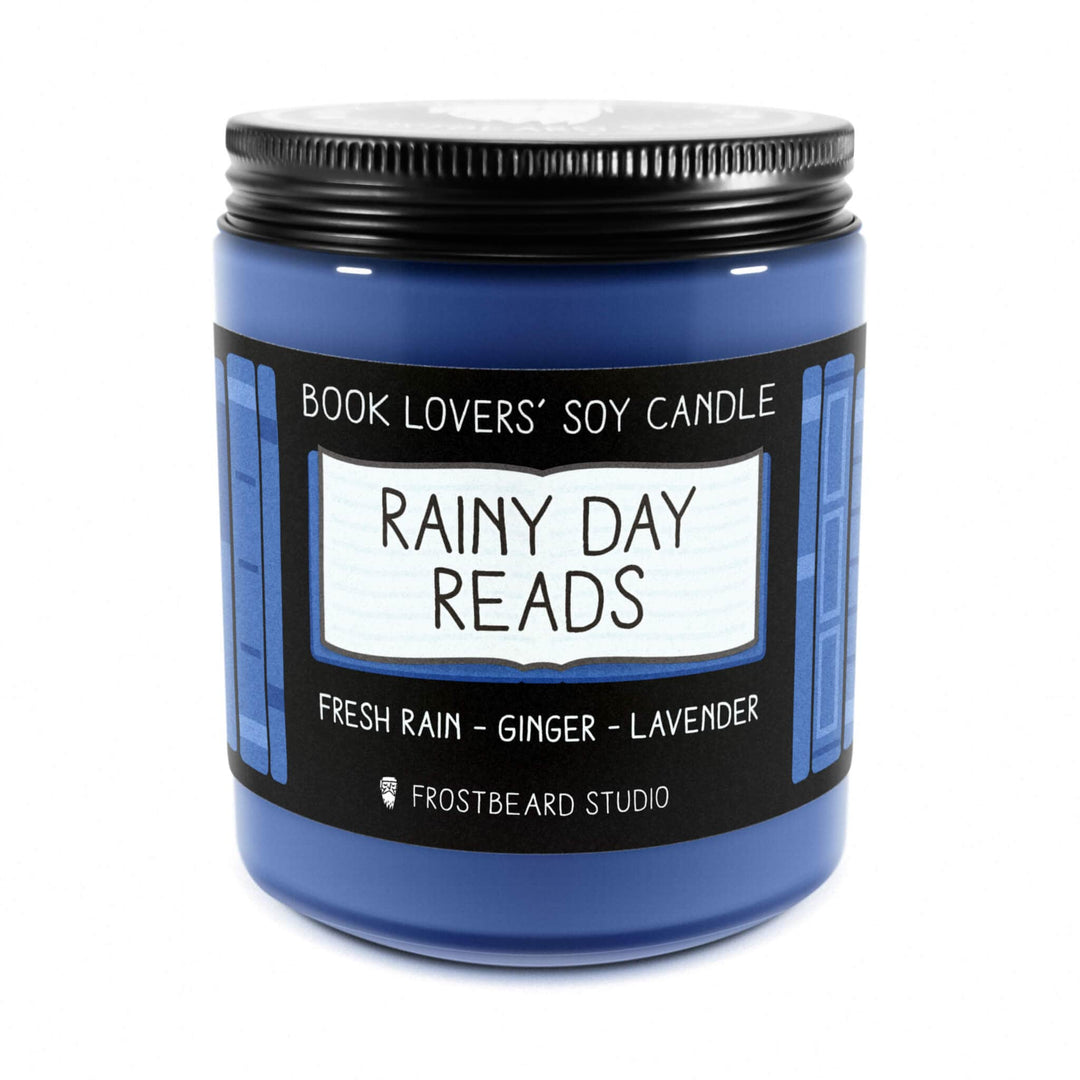Crafting the Perfect Reading Goal: Tips and Strategies
Quick Guide to Setting Reading Goals:
- Decide on the number of books you wish to read in a specific timeframe.
- Choose the genres or themes you're interested in exploring.
- Allocate reading time into your daily or weekly schedule.
- Track your progress using a journal, app, or social media platform.
- Adjust goals as needed to keep them realistic and achievable.
Reading goals are much more than just numbers; they are a path to personal growth, a way to fuel your motivation, and a means to enrich your life. Whether you aim to escape into new worlds, gain knowledge, or simply find joy in the stories you read, setting a goal can transform reading from a pastime into a purposeful journey. It’s about finding what moves you and creating a strategy to bring more of that into your life.
The key is to start simple. Goals don’t have to be grand or overly ambitious to be meaningful. They should, however, be clear and tailored to your individual aspirations and lifestyle. Whether it’s reading for 20 minutes before bed each night, completing one book per month, or branching out into unfamiliar genres, your goal should reflect what you want to achieve and why.
Reading is a powerful tool for personal development. It can broaden your perspectives, challenge your perceptions, and invite empathy and understanding. By setting reading goals, you’re not just committing to a number of books; you’re committing to your growth, exploration, and the joy of discovering new stories.

Setting a Realistic Reading Goal
Setting a reading goal is like mapping out a treasure hunt. It’s exciting, a bit challenging, and leads to rewarding discoveries. But how do you set a goal that’s just right—not too easy but achievable? Let’s break it down into manageable parts: time management, book count, page count, and genres.
Time Management: The Foundation
Time is precious, and finding extra hours in a busy schedule can feel like squeezing water from a stone. Start by looking at your daily routines. Can you swap 30 minutes of social media or TV time for reading? Maybe reading can become a new morning ritual or a way to unwind before bed.
Tip: Schedule reading time just like any other important activity in your day. Even setting aside 15 minutes can make a big difference over time.
Book Count: Setting Numeric Goals
Deciding on a number of books to read in a year is a common approach. If you’re new to setting reading goals, starting with a modest number, like 12 books (one per month), can be a good baseline. This isn’t a race. The goal here is to foster a consistent reading habit rather than rushing through books.
Page Count: Another Measure
For some, counting pages rather than books can feel less daunting. This method allows you to tackle larger books without feeling behind on your goal. Aim for a certain number of pages per day or week—whatever fits your lifestyle best.
Example: Reading 20 pages a day leads to 7,300 pages a year. That’s roughly 20 to 30 books, depending on their length!
Genres: Spice It Up
Including a variety of genres in your reading goal can keep things interesting and push you out of your comfort zone. Maybe you’re a die-hard fantasy fan. Why not throw a mystery or a non-fiction book into the mix? Exploring different genres can also prevent reading slumps and make your reading journey more enriching.
Actionable Tip: At the start of the year, list genres you typically read and ones you’d like to explore. Aim to read at least one book from each genre on your list.
Setting a realistic reading goal is all about knowing yourself and your habits. It’s okay to adjust your goals as you go. The most important thing is to enjoy the journey of reading, discovering new worlds, ideas, and characters. The ultimate goal is to enrich your life, one book at a time.
In the next section, we’ll dive into Tracking Your Reading Progress. Keeping a record of what you’ve read and tracking your progress can be incredibly satisfying and motivating. Let’s explore some effective strategies and tools for doing just that.
Tracking Your Reading Progress
After setting your reading goal, the next step is to keep track of your progress. This helps you stay on course and feel the joy of every step forward. Here are some simple yet effective ways to do it.
Goodreads
Goodreads is a favorite tool for many readers. It lets you log the books you've read, share reviews, and see what your friends are reading. You can also set your yearly reading challenge and track your progress. It's like a social network for book lovers!
Book Journal
For those who love writing by hand, a book journal is perfect. You can jot down notes, your thoughts on the book, and what you learned. It's a great way to reflect on your reading journey. Plus, flipping through a physical journal can be very satisfying.
Bullet Journal
A bullet journal offers a more creative way to track your reading. You can draw bookshelves, color in books as you read them, and make lists of books to read next. It's customizable, so you can design it exactly how you like.
Digital Tools
There are digital tools beyond Goodreads that can help. Apps like italictype and platforms like Notion offer templates and tracking systems tailored for readers. They allow you to create digital TBR lists, track your reading progress, and even share your journey with others.
Physical Tools
Aside from journals, there are fun physical tools like reading log bookmarks. These bookmarks not only hold your place but also let you track your reading progress for each book. For the crafty readers, creating a mini bookshelf where you add a book for each one you read throughout the year can be a delightful way to see your progress grow.
Why Track Your Reading?
Tracking your reading progress does more than just help you hit your goal. It turns reading into a journey where you can see how far you've come. It makes each book a milestone and each page a step forward. Plus, sharing your progress with a community can be incredibly motivating.
By using tools like Goodreads, keeping a book journal, or even engaging in creative tracking with a bullet journal, you're not just reading; you're embarking on a literary adventure. And with each book you log, you're not only closer to your goal but to becoming a more engaged, thoughtful reader.
In our next section, we'll explore Engaging with the Reading Community. Connecting with fellow readers can enrich your reading experience, offering support, recommendations, and a shared love for books. Let's dive into how you can become part of this vibrant community.
Engaging with the Reading Community
Joining a reading community can make your journey towards your reading goal more enjoyable and rewarding. Whether you're a fan of classic literature or the latest bestsellers, there's a place for you. Here's how to dive into book clubs, Bookstagram, BookTok, and why accountability matters in reaching your goals.
Book Clubs
Book clubs offer a structured way to meet new people, discover new books, and share your thoughts. According to a guide by Frostbeard Studio, finding a book club that matches your interests is the first step. Whether it's a local group that meets in a cozy café or an online community that gathers from around the globe, book clubs can provide a sense of accountability and motivate you to keep reading. The goal is not just to read but to share and deepen your understanding of the books.
Bookstagram and BookTok
Social media platforms like Instagram and TikTok have vibrant communities of book lovers. Known as Bookstagram and BookTok, respectively, these platforms allow you to share your current reads, post reviews, and get recommendations. Following book-related accounts can be a great source of inspiration. However, it's easy to spend more time scrolling than reading. If you find yourself getting sucked into social media more than your books, it might be time to take a step back and focus on your reading.
Accountability
Accountability plays a crucial role in achieving any goal, including your reading goals. Sharing your goals with a friend or a community can help keep you on track. As mentioned in the Reddit discussion on setting reading goals, setting a numeric goal like reading a certain number of pages a day or books a year can help, but so can sharing these goals with others. They can offer encouragement, share their progress, and even provide gentle nudges to keep you moving forward.
Connecting with Fellow Readers
Engaging with the reading community, whether through book clubs, social media, or even casual conversations about books, can add a rich layer to your reading experience. It's not just about ticking off another book from your list; it's about the discussions, the shared excitement, and sometimes even the debates that a good book can spark.
Remember that reading is a personal journey that is enriched by the communities we choose to engage with. Whether you're a silent observer on BookTok or an active member of a local book club, these communities can offer support and inspiration as you work towards your reading goals.
Next, we'll explore the Diverse Reading Formats available to readers today, from e-books to audiobooks and everything in between, and how they can fit into your reading habits.
Diverse Reading Formats
The way we read is as diverse as what we read. From the tactile pleasure of physical books to the convenience of e-books and the immersive experience of audiobooks, each format offers something unique. Understanding these options can help you figure out how to set a reading goal that fits your lifestyle and preferences.
Physical Books
There's something special about holding a book in your hands. The weight, the smell, and the act of turning pages can enhance the reading experience. Physical books don't require batteries or screens, making them perfect for uninterrupted reading sessions. However, they can take up space and might not be ideal for on-the-go reading.
E-books
E-books have revolutionized reading by making it possible to carry a whole library in your pocket. With devices like e-readers, tablets, or even smartphones, you can access thousands of books anytime, anywhere. E-books often offer features like adjustable text size and backlighting, making reading accessible to everyone. The downside? They rely on electronic devices and battery life.
Audiobooks
For those who are always on the move, audiobooks can turn any activity into a reading session. Whether you're commuting, exercising, or doing chores, audiobooks allow you to multitask while enjoying your favorite books. Some argue that it's easier to get distracted with audiobooks, but for many, they are a way to consume more books than they otherwise would.
Reading Habits
Your reading habits play a crucial role in deciding which format works best for you. If you enjoy the physical aspect of reading, traditional books might be your go-to. If convenience and accessibility are your priorities, e-books could be the answer. And if you're looking to fit more reading into a busy schedule, give audiobooks a try.
When setting a reading goal, consider incorporating a mix of formats. This approach can keep your reading experience fresh and accommodate different aspects of your lifestyle. For example, you might aim to read one physical book a month at home, listen to audiobooks during your commute, and enjoy e-books while traveling.
How to Set a Reading Goal with Diverse Formats: 1. Assess Your Lifestyle: Choose formats that align with your daily activities and preferences. 2. Mix and Match: Don't limit yourself to one format. Exploring different options can enrich your reading experience. 3. Set Specific Goals: Perhaps aim to read a certain number of books in each format over the year.
By embracing the variety of reading formats available, you can tailor your reading goals to fit your life perfectly. Whether you're curled up with a print book, scrolling through an e-book, or losing yourself in an audiobook, the important thing is that you're reading and enjoying the journey.
We'll tackle Overcoming Common Reading Challenges, offering tips and strategies to keep you on track toward your reading goals.
Overcoming Common Reading Challenges
Reading is a journey filled with ups and downs. Sometimes, you might find yourself in a reading slump, struggling to find time, or searching for the right book. Let's dive into some strategies to overcome these common reading challenges.
Reading Slumps
What's a reading slump? It's when you can't seem to pick up a book or lose interest in reading altogether. It happens to everyone.
- Tip 1: Change genres. Sometimes, all you need is a change of scenery. If you've been reading a lot of one genre, try something completely different.
- Tip 2: Set small goals. Instead of aiming to finish a book, aim to read a page or a chapter a day. Small wins can reignite your reading passion.
- Tip 3: Re-read a favorite. Sometimes, revisiting a beloved book can remind you why you love reading.
Time Constraints
Finding time to read can be challenging, especially with a busy schedule.
- Tip 1: Carry a book everywhere. You never know when you'll have a few spare minutes to read.
- Tip 2: Audiobooks. Listen while you're commuting, cooking, or exercising. It's a great way to fit reading into a packed day.
- Tip 3: Schedule it. Treat reading like an important appointment and block off time in your calendar.
Finding the Right Books
Choosing what to read next can be overwhelming, but it's crucial for maintaining your reading momentum.
- Tip 1: Use book recommendation services. Websites and apps can suggest books based on your interests and what you've enjoyed in the past.
- Tip 2: Join a book club. Being part of a book club not only helps you decide what to read but also provides a deadline and a community to discuss the book with.
- Tip 3: Follow book bloggers or Bookstagrammers. They often review a wide range of books and can be a great source of inspiration.
Reading should be enjoyable, not a chore. If a book doesn't capture your interest, it's okay to put it down and try something else. The key to overcoming reading challenges is to be flexible with your habits and open to exploring new ways to engage with books.
As we continue our journey, we'll explore some Frequently Asked Questions about Setting Reading Goals, providing you with practical advice and answers to common queries.
Frequently Asked Questions about Setting Reading Goals
Setting reading goals can be a fun and rewarding way to enhance your reading experience. Let's dive into some common questions to help you craft the perfect reading goal.
What is an example of a reading goal?
An example of a reading goal might be, "I want to read 12 books this year," which breaks down to one book per month. This goal is specific, measurable, and achievable. Other examples include setting a goal to read for 20 minutes every day or to explore a new genre every quarter.
How do you set a good reading goal?
To set a good reading goal, follow these simple steps:
-
Be Specific: Instead of saying, "I want to read more," specify how much more. For example, "I want to read 30 books this year."
-
Make it Measurable: Ensure your goal is something you can track. Setting a goal to read a certain number of books or pages makes your progress measurable.
-
Achievable: Your goal should stretch you but also be within reach. Consider your schedule and reading speed.
-
Relevant: Choose a goal that matters to you. If you love fiction, maybe set a goal to dive into non-fiction to broaden your horizons.
-
Time-Bound: Give yourself a deadline. A year is common, but you might also set monthly or quarterly goals.
What is a good reading goal per day?
A good daily reading goal varies from person to person. Starting with as little as 5 to 10 minutes a day can be beneficial, especially if you're trying to build a habit. If you're more experienced or have more time, aiming for 30 minutes to an hour daily is excellent. The key is consistency, not the amount of time.
The goal of setting reading goals is not just to check off a box but to enrich your life with the joy of reading. Whether you're exploring new worlds, learning new concepts, or simply enjoying the beauty of language, each book you read is a step towards achieving your personal and intellectual goals.
We'll wrap up with how to celebrate your achievements and adjust your goals, keeping in mind the cozy and inspiring atmosphere provided by Frostbeard Studio.
Conclusion
Celebrating Achievements
Every book you finish, every page you turn, is a victory in your reading journey. It's essential to celebrate these achievements, no matter how small they may seem. Celebrating helps to reinforce your love for reading and can motivate you to keep pushing towards your goals. Whether it's treating yourself to a new book, sharing your progress with friends, or simply taking a moment to reflect on what you've learned, acknowledgment of your efforts is crucial.
It’s not just about the quantity of books you read but the quality of your reading experience. Each book that makes you think, feel, and explore new ideas is worth celebrating.
Adjusting Goals
Setting a reading goal is not a one-time task. As your life changes, so too might your availability to read and your interests in different genres or formats. It's okay to adjust your goals as needed. If you find yourself consistently not meeting your weekly or monthly targets, it might be time to reassess and set more realistic goals. Conversely, if you're easily surpassing your goals, perhaps it's time to challenge yourself further.
Adjusting your goals is not a sign of failure but a sign of growth. It shows you're paying attention to your habits, preferences, and lifestyle, and you're willing to make changes to continue improving.
Frostbeard Studio
At Frostbeard Studio, we understand the joy and fulfillment that comes from reading. We’re committed to creating an atmosphere that enhances your reading experience, making each moment you spend with a book even more special. Our book-inspired candles are designed to transport you into the story, allowing you to immerse yourself fully in the worlds created by your favorite authors.
As you set and work towards your reading goals, Frostbeard Studio is here to support you. Whether you’re curling up with a good book on a rainy day, celebrating the completion of a reading challenge, or adjusting your goals to better suit your lifestyle, our candles can add an extra layer of enjoyment to your reading routine.
In conclusion, setting a reading goal is a personal journey that can lead to significant personal growth and enjoyment. By celebrating your achievements, being willing to adjust your goals, and creating a cozy reading environment with Frostbeard Studio, you can make reading an even more integral and enjoyable part of your life. Here’s to many more books, insights, and adventures in your reading journey!







